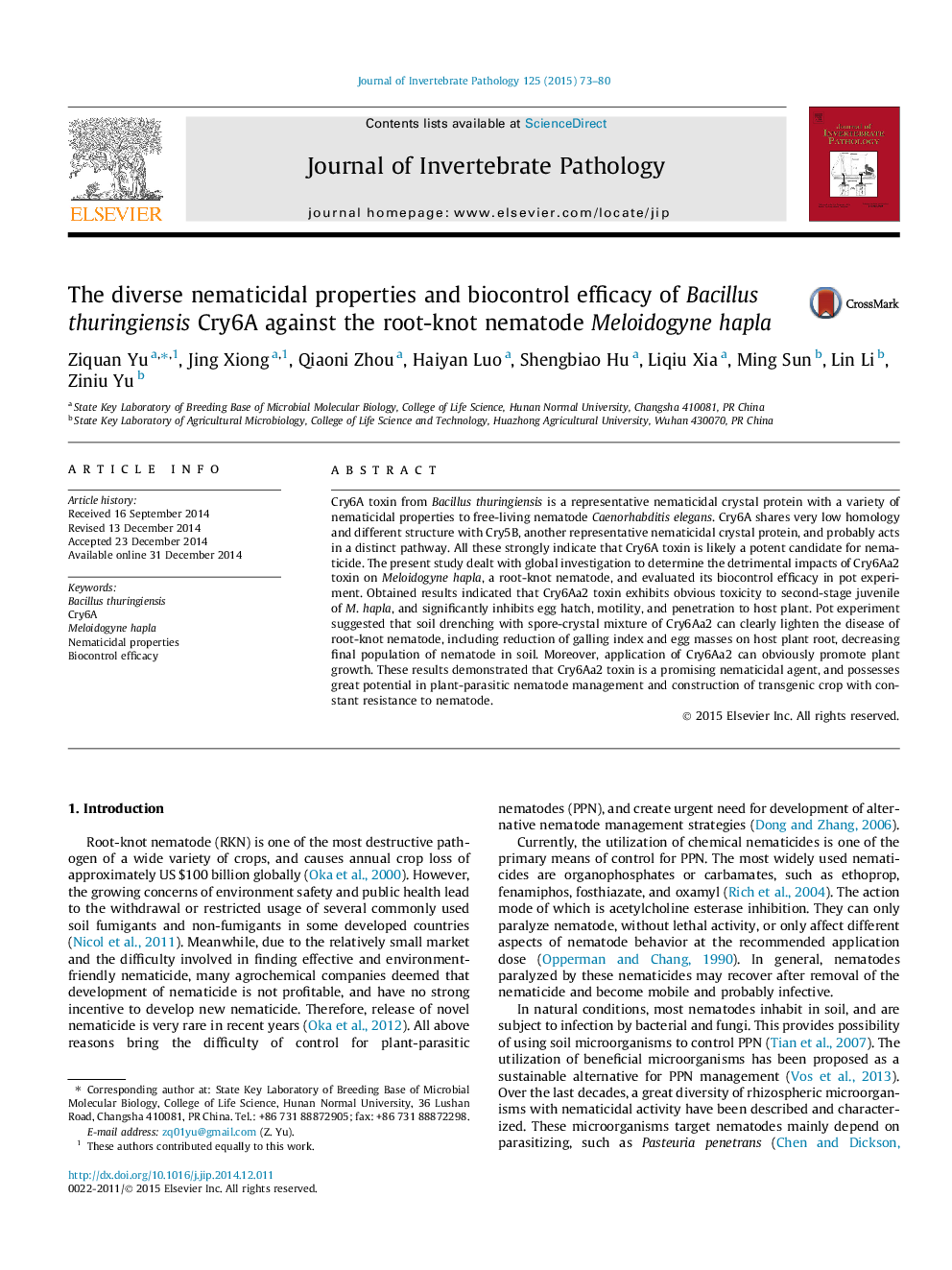| Article ID | Journal | Published Year | Pages | File Type |
|---|---|---|---|---|
| 4557679 | Journal of Invertebrate Pathology | 2015 | 8 Pages |
•Diverse nematicidal properties of Cry6Aa2 against RKN were observed for the first time.•Cry6Aa2 exhibited high efficiency of biocontrol for RKN in pot experiment.•Cry6Aa2 possesses great potential for PPN management.
Cry6A toxin from Bacillus thuringiensis is a representative nematicidal crystal protein with a variety of nematicidal properties to free-living nematode Caenorhabditis elegans. Cry6A shares very low homology and different structure with Cry5B, another representative nematicidal crystal protein, and probably acts in a distinct pathway. All these strongly indicate that Cry6A toxin is likely a potent candidate for nematicide. The present study dealt with global investigation to determine the detrimental impacts of Cry6Aa2 toxin on Meloidogyne hapla, a root-knot nematode, and evaluated its biocontrol efficacy in pot experiment. Obtained results indicated that Cry6Aa2 toxin exhibits obvious toxicity to second-stage juvenile of M. hapla, and significantly inhibits egg hatch, motility, and penetration to host plant. Pot experiment suggested that soil drenching with spore-crystal mixture of Cry6Aa2 can clearly lighten the disease of root-knot nematode, including reduction of galling index and egg masses on host plant root, decreasing final population of nematode in soil. Moreover, application of Cry6Aa2 can obviously promote plant growth. These results demonstrated that Cry6Aa2 toxin is a promising nematicidal agent, and possesses great potential in plant-parasitic nematode management and construction of transgenic crop with constant resistance to nematode.
Graphical abstractFigure optionsDownload full-size imageDownload as PowerPoint slide
